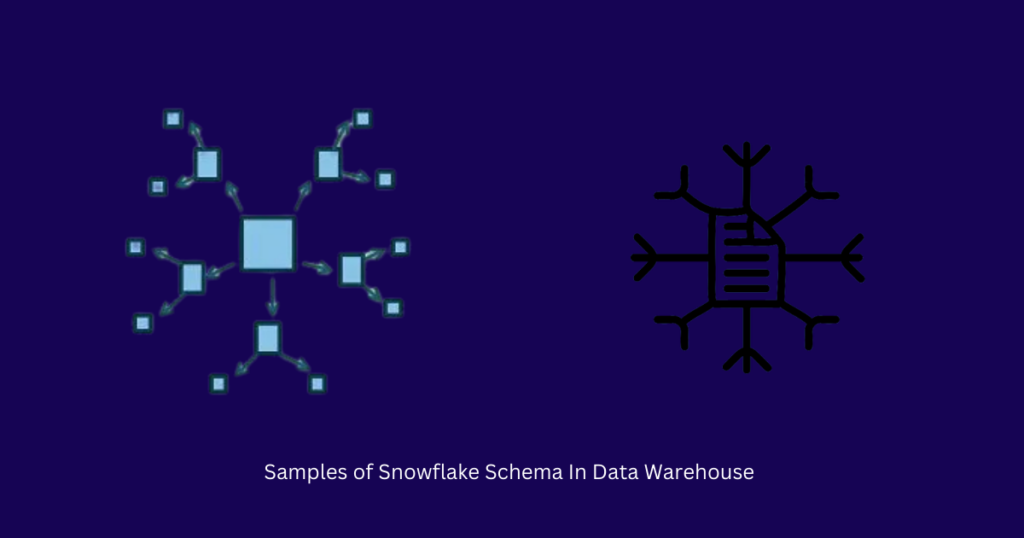Snowflake Schema In Data Warehouse: Data warehousing is at the heart of modern analytics, and choosing the right schema is crucial for performance and efficiency. One of the widely used schemas is the snowflake schema in data warehouse, known for its normalization and reduced redundancy. But is it the right fit for your business?
In this blog, we will explore:
- What is snowflake schema and how it works
- Characteristics of snowflake schema
- Difference between star schema and snowflake schema
- Advantages of snowflake schema over star schema
- When to use snowflake schema
- How to create snowflake schema
- Example of snowflake schema
If you’re a data professional or an aspiring data analyst, this guide will help you understand how to structure your data warehouse effectively.
What is Snowflake Schema?
The snowflake schema in data warehouse is a type of database schema where the data is structured in a normalized format. It extends the star schema by breaking down dimension tables into multiple related tables.

Key features of snowflake schema:
- Normalization – Dimension tables are split into multiple related tables to remove redundancy.
- Hierarchical Relationships – Data is structured in multiple layers.
- Reduced Storage Space – Since redundant data is eliminated, storage usage is optimized.
- Complex Joins – Requires more joins to fetch data, making queries slightly slower than in a star schema.
According to a study by Data Science Central, Snowflake schemas can reduce storage requirements by up to 30%, improving data organization.
Example of Snowflake Schema
To understand better, let’s take an example of a sales database.
Star Schema Structure:
- Fact Table: Sales (sales_id, date, customer_id, product_id, store_id, sales_amount)
- Dimension Tables: Customer, Product, Store, Date
Snowflake Schema Structure:
- Fact Table: Sales (sales_id, date_id, customer_id, product_id, store_id, sales_amount)
- Dimension Tables:
- Customer → (customer_id, customer_name, region_id)
- Region → (region_id, region_name)
- Product → (product_id, category_id)
- Category → (category_id, category_name)
- Store → (store_id, city_id)
- City → (city_id, city_name, country_id)
- Country → (country_id, country_name)
In the snowflake schema, dimensions are further divided into multiple related tables, improving storage efficiency.

Difference Between Star Schema and Snowflake Schema
| Features | Star Schema | Snowflake Schema |
| Normalization | Denormalized | Normalized |
| Storage Requirement | Higher | Lower |
| Query Complexity | Simpler | Complex (more joins) |
| Performance | Faster queries | Slower due to joins |
| Use Case | Best for simple queries | Best for complex analytics |
A common saying in data engineering: Use star schema for speed, snowflake schema for space.
Advantages of Snowflake Schema Over Star Schema
While star schema is simpler, snowflake schema in data warehouse offers several advantages:
- Optimized Storage – Due to normalization, redundant data is removed, reducing storage requirements.
- Better Data Integrity – Since each piece of data is stored only once, there is less risk of data inconsistency.
- Hierarchical Representation – Snowflake schema naturally supports complex hierarchies, making it useful for multi-level reporting.
- Scalability – Suitable for large datasets that require structured organization.
When to Use Snowflake Schema?
The choice between star schema and snowflake schema depends on the business requirements. You should use snowflake schema in data warehouse when:
- Your dataset has complex hierarchical relationships (e.g., geographical data).
- You need to save storage space and optimize database size.
- Data integrity is a priority, and normalization is required.
- You are working with a multi-layered data model that requires structured relationships.
How to Create Snowflake Schema?
Implementing a snowflake schema in data warehouse involves a few key steps:
Step 1: Identify Fact and Dimension Tables
- Define your fact table containing measurable data (e.g., sales, revenue).
- Define dimension tables (e.g., customer, product, location).
Step 2: Normalize Dimension Tables
- Break down dimensions into smaller tables to remove redundancy.
- Example: Split the “Location” table into “City” and “Country.”
Step 3: Establish Primary and Foreign Keys
- Each table should have a primary key for uniqueness.
- Create foreign keys to link tables.
Step 4: Optimize Query Performance
- Use indexes to speed up queries.
- Optimize joins for better performance.

On A Final Note…
The snowflake schema in data warehouse is a powerful data modeling technique that provides storage efficiency, better data integrity, and structured hierarchical representation. While it may not be the fastest schema for querying, it is ideal for complex analytical reporting and large datasets.
Want to learn more about data warehouse modeling? Check out Ze Learning Labb’s courses on data engineering and analytics to master these concepts hands-on!





